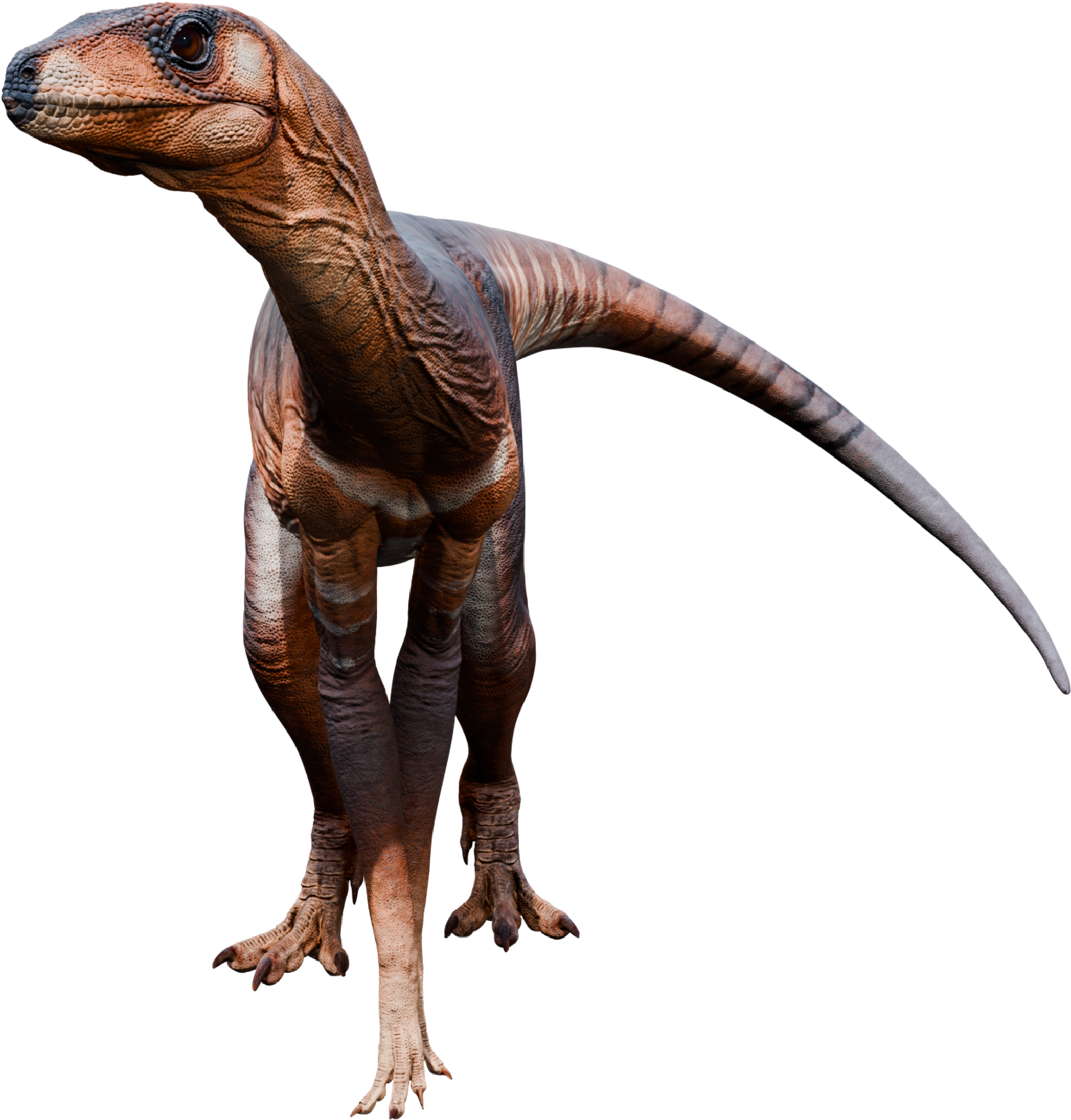Silesia's Almost Dinosaur
This small omnivore hailing from modern-day Poland is not a dinosaur, but a close relative. Known from some 20 specimens, it helps to shed light on the mystery of the the dinosaurs' origin, and the creatures that led up to them!
Overview: Among the many strange and wonderful creatures of the Triassic were the silesaurids, a group of small animals very close to the origin of dinosaurs. The namesake of this group, Silesaurus, was a small omnivore that lived in the seasonally wet subtropical land that is now Poland. This rather unassuming creature, named in 2003, is known from some 20 specimens and sheds additional light on the evolution of the dinosaurs, and the creatures that led up to them, though much about the origin of both silesaurids and dinosaurs remains shrouded in mystery.
Discovery: Silesaurus was discovered in the Late Triassic rocks of the Keuper Claystone of Silesia, Poland, near the city of Opole. In 2003, it was named by Polish paleontologist Jerzy Dzik. Silesaurus means “Silesia Lizard” named for the historical Silesia region of modern-day Poland, formerly Germany/Prussia, where it was discovered. The species name opolensis references the city of Opole. Silesaurus is known from around 20 skeletons, making it one of the best represented non-dinosaurian dinosauriformes.
Evolution: Silesaurus was a member of the family Silesauridae.Silesaurids are something of an evolutionary enigma, as their placement relative to the dinosaur family tree is a source of active debate. They have traditionally been classified as an offshoot of dinosauriform avemetatarsalians – the same group of reptiles from which dinosaurs also originated. However, a growing body of researchers now consider them to be early ornithischian dinosaurs (the group containing more famous giants such as Stegosaurus and Triceratops), with a paraphyletic distribution across the early diverging branches of the clade, as opposed to a true evolutionary group with a shared common ancestor. Silesaurids and unambiguous dinosaurs are anatomically very similar, but still appear to exhibit a number of distinct differences, particularly in the pelvis.Dinosaurs are typically defined as having a perforate acetabulum – i.e. the hip socket is a hole that passes all the way through the pelvis. By contrast, the silesaurid acetabulum is closed off by a “back wall” of bone, as is typical of most other vertebrates. While both dinosaurs and silesaurs had upright hind limbs, in Silesaurus itself they are “pillar erect”, meaning that the femur projects downwards from a more steeply inclined hip joint, as opposed to the dinosaurian condition, in which the femoral shaft is held upright due to the shaft of the femur being sharply angled away from its head. If silesaurids are indeed early ornithischians instead of non-dinosaurian dinosauriforms, this would challenge conventional wisdom about the early characteristic evolution of the dinosaurian pelvis. However, the debate is still ongoing.
Description: Silesaurus was a small and lightly built animal around 2 and a half metres (8 feet) in length. Most early dinosaurs and dinosaur relatives were short-armed bipeds, but the forelimb bones of Silesaurus were unusually long, and were thus able to reach the ground. It is therefore possible that Silesaurus represents an early example of the convergent evolution of quadrupedal gait that characterised many later dinosaur groups. However, the ability of the relatively gracile forelimbs to bear weight and contribute to propulsion has yet to be tested, and the overallshape of the body and hind limb bones suggests a retention of bipedal capabilities. The snout of Silesaurus was filled with small and serrated conical teeth, with the exception of the very tip of the lower jaw, which instead exhibited a pointed, beak-like spur. If Silesaurus was indeed an early ornithischian, then this small spur may have been the precursor to the predentary bone, which is a unique feature of ornithischians that forms the core of their lower beak.
Ecology: Silesaurus has traditionally been considered as a herbivore due to the shape of its teeth. However, studies of potential Silesaurus coprolites (fossil feces) would point towards a partially insectivorous diet. Silesaurus lived about 230 million years ago in what is now Poland. Back then, Poland enjoyed something similar to a warm subtropical climate with dry winters and wet monsoonal summers. Ferns were especially abundant and may have formed an important part of the diet of Silesaurus. It shared its environment with early pterosaurs, lungfish, temnospondyls, and phytosaurs, the latter two of which may have been predators of Silesaurus. The large Polish rauisuchian Polonosuchus may have been a predator of Silesaurus.
Extinction and Legacy: It is unknown exactly when or why Silesaurus went extinct. But it likely had to do with the changing and increasingly harsh climate of Triassic Pangea as well as competition from other archosaurs, in particular, dinosaurs. Nevertheless, silesaurids as a group apparently managed to coexist with their dinosaur cousins until about 203 million years ago near the end of the Triassic, at which point silesaurids disappeared, along with many other groups of Triassic animals. Today, Silesaurus can be found, both as fossils as well as a hypothetical life reconstruction, in the Museum of Evolution of Polish Academy of Sciences in Warsaw, Poland.
Silesaurus FAQ
Silesaurus size / How big was Silesaurus?
See height, weight, and length.
Silesaurus weight / How much did Silesaurus weigh?
The weight/mass of Silesaurus is unknown, but it was fairly small and lightly built. It may have weighed less than a human.
How long was Silesaurus?
Silesaurus was about 2.3 meters (7.5 ft) in length.
Silesaurus Height / How tall was Silesaurus
Silesaurusprobably stood about 0.83 meters (2.72 ft tall).
What did Silesaurus eat?
Silesaurus was a small herbivore and insectivore, eating low growing plants and insects like the beetle Triamyxa.
What is Silesaurus’s closest living relative?
As close relatives of the dinosaurs, the closest living relatives of Silesaurus are the one remaining lineage of dinosaurs, the birds.
Silesaurus family members / Silesaurus family / What kind of animal was Silesaurus?
Silesaurus was a member of the family Silesauridae, which were early members of Dinosauriformes, which includes dinosaurs and their close relatives. Thus Silesaurus was closely related to early dinosaurs, but not a true dinosaur itself.
Where did Silesaurus live? / Where was Silesaurus found?
Silesaurus lived in central Europe and has been found in the region of Silesia in Poland.
When did Silesaurus live?
Silesaurus lived about 230 million years ago in the Late Triassic Period.
What does Silesaurus mean? / Silesaurus name meaning
Silesaurus means “Silesia Lizard”, named for the historical region of Silesia in which it was found, part of modern-day Poland, and formerly a part of Germany/Prussia.

